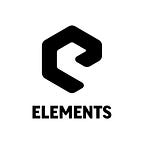Google NEXT Amsterdam 2016
Author: Eltjona Qato
These last two weeks have been productive in terms of cloud computing vendors’ summits and events, last week, on Tuesday June 7th, time colleague Eltjona I had the opportunity to visit Google NEXT in Amsterdam, in the beautiful Westerpark.
The event started with the Google keynote, emphasizing on the size of their current infrastructure, their more than 10 years experience in cloud computing and the future of machine learning and big data. Overall the keynote was very down to earth, as the whole conference and talks were, not trying to boast buzzwords or fancy wording, just pointing out what they can do best with their solutions and proving that they can do it live on a conference.
After the initial opening keynote and break, there was the difficult task of choosing the right talks to attend to, since there was always at least two that would interest us. I decided to attend ‘Painless container management with Google Container Engine & Kubernetes’ by Matt Feigal from Google and Jorrit Salverda from Travix. Interesting to see the advances of Kubernetes and what it will bring in the near future.
The next talk was done by Taco Ekkel from Q42, talking about real life IoT architectures, performance, and cost. He gave a talk and presentation about how they designed the Philips HUE light system, the quirks and the lessons learned. Really inspiring to hear from someone on the front line of IoT deployments to talk about their development and operations process.
Now it was time for the lunch break and walk around the exhibition area, we could do a VR tour of the Google data centers using Google Cardboard. We could also take a picture and let Google analyze the face in order recognize facial expressionss and let AI try to understand the kind of emotions the pictures were showing… Quite accurate! We could also play kind of a ‘Jeopardy’ game using the Google database query, analyzing 9 billions of rows in less than 2 seconds and there was also an area where we could run some labs on Google cloud compute.
After the break it was time for the next set of talks. ‘No Ops deployments’ by Constantijn Visinescu from Xebia, showcased how they are doing automatic deployments and rollbacks without anyone touching a piece of infrastructure. Right after this talk, it was time to learn how to build smart applications with your new superpower using cloud machine learning by Rob Craft from Google. His talk showcased how Google is using machine learning to predict the number of taxis needed in New York depending on the weather. It also showed how Google Translate is using machine learning to better understand how phrases are constructed in different languages and their meaning.
Last but not least, it was time to have fun with 100B rows. Alex Osterloh from Google and Ruben Gersons from Screen6 showed how they used big data from Google to query a petabyte(!) sized database in over a couple of minutes, even with a non-efficient SQL query. Google can ingest huge amounts of data and we are now able to query it, using the Google cloud, simplifying how can we deal with big data and the usage that we can make out of it.
All in all it was a very down-to-earth conference with Google demonstrating its strength on machine learning, big data and showing how it differentiates from its competitors by using a more flexible approach to billing, as you only pay what you use (per-minute) and not on a hourly base. Besides offering a Google cardboard, they also gave away a much-appreciated $500 voucher to be used on Google Cloud Platform, however that we want. We will give it a try in near future and report back here in the blog!
Originally published at www.elements.nl on June 13, 2016.
